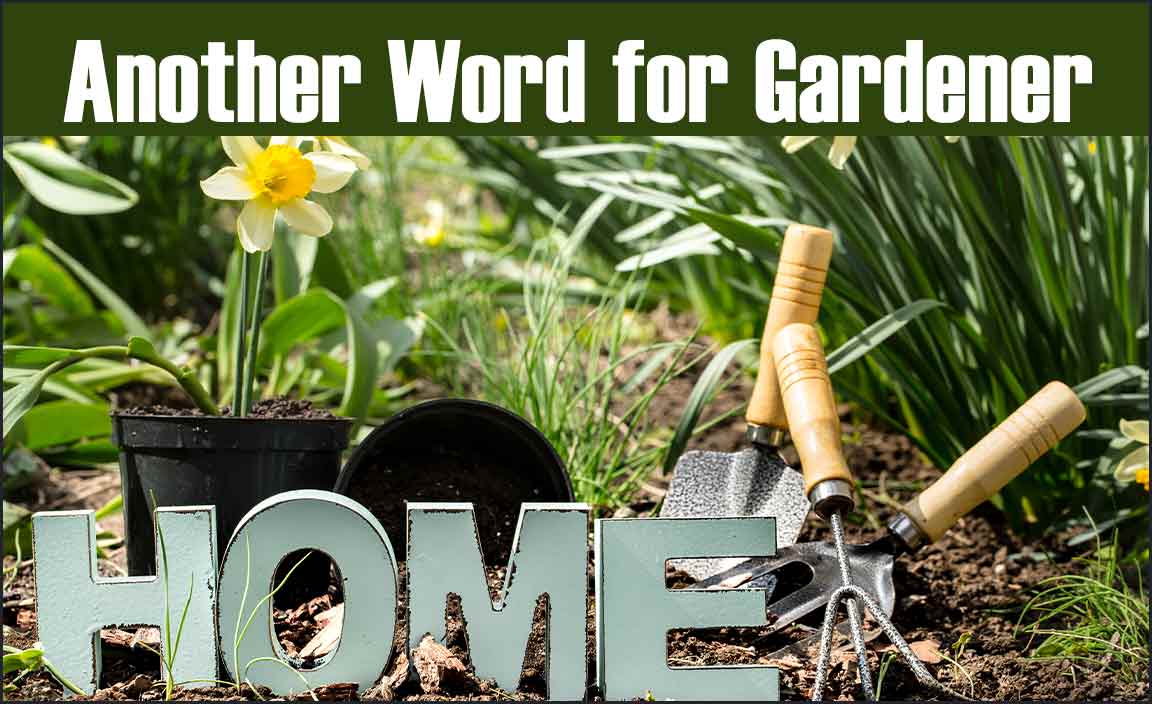Boost your plants naturally and affordably with easy DIY organic boosters! Discover simple recipes using everyday ingredients to promote healthier, more vigorous growth for your indoor and outdoor gardens. This guide provides essential tips for beginners to get started today.
DIY Organic Plant Boosters: Genius Essential Growth
Are your plants looking a little… blah? Maybe they’re not growing as fast as you’d hoped, or their leaves seem a bit pale. It’s a common frustration for gardeners, whether you’re tending to a windowsill herb garden or a backyard vegetable patch. You want your plants to thrive, to burst with life and color, but sometimes it feels like a mystery. The good news? You don’t need expensive, store-bought fertilizers to achieve amazing results. Nature provides an abundance of resources to whip up powerful plant boosters right in your own kitchen. We’re diving into the simple, genius world of DIY organic plant boosters that will give your green friends the essential growth they crave, without breaking the bank or harming the planet. Get ready to unlock vibrant growth, naturally!
Why Go Organic with Plant Boosters?
Choosing organic plant boosters isn’t just a trend; it’s a commitment to healthier plants, a healthier you, and a healthier planet. Unlike synthetic fertilizers, which can sometimes be harsh and lead to soil imbalances, organic options work with nature. They feed the soil, encouraging a rich ecosystem of beneficial microbes that are crucial for nutrient uptake by your plants. This means stronger roots, more resilient plants, and less risk of nutrient runoff into our waterways. Plus, many of these boosters are made from items you might otherwise throw away, turning kitchen scraps into garden gold!
Understanding What Plants Need
Before we start mixing, it helps to know what makes plants happy and healthy. Plants primarily need three essential nutrients, often called macronutrients, in large amounts:
- Nitrogen (N): This is crucial for leafy growth and vibrant green color. Think of it as the building block for leaves and stems.
- Phosphorus (P): Essential for root development, blooming, and fruiting. It’s like the energy source for flowers and fruits to form.
- Potassium (K): Important for overall plant health, disease resistance, and water regulation. It helps plants cope with stress and stay strong.
While these are the big three, plants also need micronutrients in smaller amounts, like iron, magnesium, and calcium. Many organic boosters provide a good mix of these essential elements, creating a balanced diet for your plants.
DIY Organic Plant Boosters: Step-by-Step Recipes
Let’s get our hands dirty (but not too dirty!) with some incredibly effective and easy-to-make organic plant boosters. These are perfect for beginners and require minimal effort.
1. Banana Peel Power Boost (Potassium Rich)
Banana peels are packed with potassium, a key nutrient for flowering and fruiting plants, and also provide a good dose of phosphorus and calcium. This is a fantastic, simple booster for your tomatoes, peppers, roses, and flowering houseplants.
What You’ll Need:
- Banana peels (from 2-3 ripe bananas)
- Water (about 1 quart or 1 liter)
- A jar or container with a lid
- A fine-mesh strainer or cheesecloth
Instructions:
- Prepare the Peels: You can either chop the banana peels into small pieces or blend them with a little water for faster decomposition.
- Soak and Steep: Place the chopped or blended banana peels into your jar. Fill the jar with the quart of water.
- Seal and Wait: Close the lid tightly. Let the mixture steep for at least 2-4 weeks, in a cool, dark place. The water will turn murky and might develop a slightly fermented smell – that’s normal!
- Strain the Booster: After steeping, carefully strain the liquid to remove the banana peel solids. You can compost the solids.
- Dilute and Apply: Dilute the concentrated liquid with an equal amount of water (1:1 ratio). So, if you have 1 cup of booster, mix it with 1 cup of water.
- Feed Your Plants: Use this diluted solution to water your plants every 2-4 weeks during their growing season. Avoid pouring directly on the leaves.
Pro Tip: For an even faster boost, you can dry banana peels in the oven on a low setting, then grind them into a powder. Mix this powder directly into your potting soil or garden bed.
2. Coffee Ground Comet Feed (Nitrogen Boost)
Used coffee grounds are a gardener’s treasure! They are rich in nitrogen, which promotes lush, green foliage, and they also contribute a small amount of phosphorus and potassium. They also help to improve soil structure and can make your soil more acidic, which is great for acid-loving plants like blueberries, rhododendrons, and azaleas.
What You’ll Need:
- Used coffee grounds
- Water
Instructions:
- Collect Grounds: Save your used coffee grounds – let them dry out slightly to prevent mold.
- Option 1: Direct Application: Spread a thin layer of dried coffee grounds directly onto the soil around your plants. Gently scratch them into the top inch of soil. This is best for outdoor plants or larger containers and should be done sparingly to avoid matting the soil.
- Option 2: Coffee Tea: Steep about 1 cup of used coffee grounds in 1-2 gallons of water for 12-24 hours. Strain the mixture.
- Water Your Plants: Use this “coffee tea” to water your plants. This is a gentler way to deliver nutrients, especially for indoor plants.
Important Note: While coffee grounds are acidic, once they are brewed and dried, their acidity is significantly reduced, making them generally safe for most plants. However, it’s still best to use them in moderation. Never use un-brewed coffee grounds, as they can be too harsh for plants due to their high caffeine content.
3. Egg Shell Earth Fortifier (Calcium Rich)
Eggshells are an excellent source of calcium, vital for strong cell walls in plants. Calcium deficiency can lead to blossom end rot in fruits like tomatoes and peppers, and stunted growth in general. They also provide small amounts of other minerals.
What You’ll Need:
- Clean eggshells (from about 6-10 eggs)
- A hammer or rolling pin
- A clean, dry container or resealable bag
- Optional: Baking soda
Instructions:
- Clean and Dry: Rinse the eggshells thoroughly to remove any residue. Let them air dry completely for a day or two, or bake them in a low oven (around 250°F or 120°C) for 10-15 minutes to ensure they are dry and kill any bacteria.
- Crush the Shells: Once dry, place the eggshells in a bag or on a clean surface and crush them into a fine powder using a hammer, rolling pin, or even by hand. The finer the powder, the faster the nutrients will become available to your plants.
- Optional Activation: For even quicker calcium release, you can soak the crushed shells in water with a tablespoon of baking soda for a day, then dry them again.
- Apply to Soil: Sprinkle the eggshell powder directly around the base of your plants, especially those prone to calcium issues (like tomatoes and peppers). Work it gently into the top layer of soil. You can also add it to your potting mix when repotting or starting new plants.
Tip: Adding finely ground eggshells to the planting hole when planting tomatoes or peppers can be a preventative measure against blossom end rot.
4. Vegetable Scraps Soak (Trace Minerals)
Don’t toss those carrot peels, potato rinds, or leafy green stems! Soaking these nutrient-rich scraps in water releases valuable trace minerals, vitamins, and organic compounds that can give your plants a healthy boost.
What You’ll Need:
- Clean vegetable scraps (avoid fatty or oily items, and don’t use scraps from onions or garlic if you’re concerned about deterring beneficial microbes)
- Water
- A bucket or container with a lid
- A strainer
Instructions:
- Collect Scraps: Gather clean, raw vegetable scraps from your kitchen.
- Soak Away: Place the scraps in your bucket and cover them with water. Use a ratio of about 1 part scraps to 2 parts water.
- Let it Steep: Cover the bucket and let the mixture steep for 3-7 days. It will develop a brownish hue and a mild earthy smell.
- Strain and Dilute: Strain out the vegetable solids (which can be composted). Dilute the liquid with an equal amount of fresh water (1:1 ratio).
- Water Your Plants: Use this nutrient-rich water to nourish your plants every 2-3 weeks.
5. Compost Tea Elixir (All-Around Goodness)
Compost tea is like a multivitamin for your plants and soil. It’s a liquid extract of compost, teeming with beneficial microorganisms, nutrients, and organic matter. It’s one of the best ways to improve soil health and plant vitality.
What You’ll Need:
- High-quality finished compost (about 1-2 cups)
- A large bucket (5-gallon is ideal)
- Water (dechlorinated is best – leave tap water out for 24 hours)
- A porous bag (like an old pillowcase or cheesecloth folded several times)
- Optional: Unsulphured molasses (1-2 tablespoons) – to feed the microbes
- Optional: An aquarium pump and airstone (for “aerated” compost tea, which is more potent)
Instructions (Simple Non-Aerated Method):
- Fill the Bucket: Fill your bucket about two-thirds full with water.
- Add Compost: Place the compost into the porous bag and tie it securely. Submerge the bag in the water.
- Add Molasses (Optional): If using molasses, stir it into the water.
- Steep: Let the mixture steep for 24-48 hours. Stir it occasionally.
- Strain and Dilute: Remove the compost bag (squeeze out excess liquid and compost the contents). Dilute the tea with fresh water until it’s the color of weak tea.
- Water Your Plants: Use this diluted tea to water your plants.
Instructions (Aerated Method – Briefly): For more potent tea, add an aquarium pump with an airstone to the bucket and run it continuously for 24-48 hours, adding compost and molasses. This oxygenates the brew, encouraging a more robust microbial population. This is a more advanced but highly beneficial method. More information on making active compost tea can be found from resources like the Compost Research Project at Oregon State University.
6. DIY Fish Emulsion Fertilizer
While commercially produced fish emulsion is readily available, you can create a simpler version at home, though it can be a bit… pungent! It’s a great source of nitrogen and other trace elements.
What You’ll Need:
- Fish scraps (heads, bones, scales – aim for non-oily fish if possible to reduce odor)
- Water
- A tightly sealed container or bucket with a lid (essential to control smell!)
- A strainer
Instructions:
- Place Scraps: Put the fish scraps into your container.
- Add Water: Cover the scraps with water, leaving some headspace.
- Seal Tightly: Close the lid very securely.
- Ferment: Let the mixture sit in a warm spot for 2-4 weeks. The smell will be noticeable, hence the need for a tight seal.
- Strain and Dilute: Strain the liquid, discarding the solids (compost them). Dilute this potent liquid with at least 10 parts water (1:10 ratio) before applying.
- Apply Cautiously: Use this very diluted solution as a soil drench. Due to the smell, it’s often best for outdoor use.
Alternative: If the smell is too much, consider using commercially available fish emulsion or focusing on the other booster options listed here.
7. Seaweed Extract DIY (Micronutrients)
Seaweed is a powerhouse of micronutrients, growth hormones, and beneficial compounds that strengthen plant cell walls and improve stress tolerance. While making your own from fresh seaweed can be complex due to its salt content and processing needs, a simpler soaking method can yield good results.
What You’ll Need:
- Dried seaweed or kelp (food-grade or from a reputable garden supplier)
- Water
- A container
- A strainer
Instructions:
- Soak Seaweed: Place about 1 cup of dried seaweed into a container and cover with 1 gallon of water.
- Steep: Let it soak for 2-4 weeks, stirring occasionally. The water will turn a dark brownish-green.
- Strain: Strain out the seaweed solids (compost them).
- Dilute: Dilute the resulting liquid with water until it’s a light brown color.
- Apply: Use this liquid to water your plants, promoting overall vigor and disease resistance.
When and How to Apply Your DIY Boosters
Timing is key! Most DIY organic plant boosters are best applied during the active growing season, typically from spring through early fall. Avoid over-application, as even organic nutrients can cause issues if too concentrated.
General Application Guidelines:
- Frequency: Apply boosters every 2-4 weeks, depending on the plant’s needs and the potency of the booster.
- Application Method: Most boosters are best used as a soil drench (watering the base of the plant). This allows the roots to absorb the nutrients directly.
- Dilution is Crucial: Always dilute concentrated boosters as recommended. It’s better to under-dose than over-dose.
- Test First: If you’re unsure, try a new booster on one or two plants before applying it to your entire garden.
- Observe Your Plants: Pay attention to how your plants respond. Lush, green growth is a good sign. Yellowing leaves or burnt tips might indicate over-fertilization.
DIY Boosters vs. Commercial Fertilizers
Here’s a quick comparison to help you decide when and where DIY boosters shine:
| Feature | DIY Organic Boosters | Commercial Fertilizers |
|---|---|---|
| Cost | Very low; often uses waste materials. | Moderate to high. |
| Ingredients | Natural, readily available household items. | Can be organic or synthetic; precise N-P-K ratios often labeled. |
| Ease of Use | Requires some prep time and DIY effort. | Ready to use, simple instructions. |
| Nutrient Profile | Varied, often providing a broad spectrum of macro and micronutrients, with soil-building benefits. | Often targeted for specific needs; synthetic can have rapid results but may not feed soil microbes. |
| Environmental Impact | Very low; reduces waste, supports soil health. | Can pose risks of runoff and soil degradation if not managed carefully; synthetic options require energy-intensive production. |
| Odor | Varies; some can be pungent (e.g., fish emulsion). | Generally less odor for granular, but liquid options can vary. |
Choosing DIY is a brilliant way to save money, reduce waste, and enrich your soil naturally. Commercial organic fertilizers are a great alternative if you need a specific nutrient ratio or are short on time. For a truly balanced approach, many gardeners use a combination of both!




